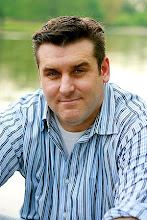
Gordon B. Hinckley: Isn’t it wonderful to have a man of maturity at the head, a man of judgment who isn’t blown about by every wind of doctrine?
[From a 1996 interview on 60 Minutes.]
It hasn’t always been this way, though. Certainly Joseph Smith was young–he didn’t even live to see 40. So when was the transition from having the Quorum of the Twelve consist of young men to having it consist of largely old men? To answer this question, I made the following figure [here it is posted above].
I apologize; I know it’s really busy. I thought it might be interesting to have all this information in the same figure, though. Here is what each part of the figure shows:
The horizontal axis shows year, running from 1835, when the Quorum of the Twelve was organized, to 2009.
The vertical axis shows age.
The blue line running through the figure shows the median age of the members of the First Presidency and the Quorum of the Twelve (excluding those who weren’t called as apostles while serving in the First Presidency; for convenience I’ll refer to this group as the Quorum of the Fifteen or the Quorum).
The orange lines show the age of the oldest member of the Quorum at each time. Breaks appear where the oldest member was displaced from his position (typically because he died).
The green lines show the age of the youngest member of the Quorum at each time. Breaks appear where the youngest member was displaced from his position (typically because someone younger was called).
The dashed black lines show the age of the President of the Church at each time. The white and gray bars in the background alternate with each change in President. The Presidents’ names are across the top left and lower right parts of the figure.
I guess I had always kind of assumed that the age increase happened wholly during Brigham Young’s tenure, since he was the first Church President to die of natural causes, and so the first to have a chance to live to a fairly advanced age. Looking at the figure, it certainly is true that the median age advanced a lot during that time. Younger men continued to be called into the Quorum–no youngest member was ever as old as 40–but existing members largely lived a long time, pushing the median age from about 40 when Joseph Smith was killed in 1844 to about 65 when Brigham Young died in 1877. But it looks like there were two other periods of consistent quorum aging.
For the 30 years following Brigham Young’s death, the Quorum’s median age was up and down but actually fell by the end to about 50. Then, starting partway through Joseph F. Smith’s administration and continuing through Heber J. Grant’s and George Albert Smith’s administrations, the median age rose consistently from 50 to about 70. A large part of this increase was driven by a group of ten members of the quorum, all consecutive in seniority, who served from 1921 to 1931 with no deaths among them. This period of increase was followed by a 40 year period during which the median age fluctuated between about 60 and over 70. Finally, starting at the beginning of Gordon B. Hinckley’s presidency, the median age increased again to nearly 80. As with the increase under Heber J. Grant, a group of men–in this case the entire Quorum–served together for a number of years (early 1995 to mid-2004) with no deaths among them.
Enough about that. Now that I’ve made the figure, I have a few other random observations from looking at it.
- Joseph Smith and Harold B. Lee are the only Church Presidents to have been around the median age for the Quorum during their presidency.
- Stephen L. Richards was the youngest member of the Quorum for longer than anyone else has been. He’s represented by the green line running through much of Heber J. Grant’s presidency. He was 37 when called in 1917, and the next nine Quorum members to be called were all born after he was.
- Thomas S. Monson was the youngest for the second longest. He’s represented by the green line that starts a little over halfway through David O. McKay’s time as President. He was 36 when called in 1963. The next six Quorum members to be called were all born after he was.
- About half of Church Presidents end up being the oldest man in the Quorum, eventually. Those who didn’t are Joseph Smith, John Taylor, Joseph F. Smith, George Albert Smith, Harold B. Lee, and Howard W. Hunter. (Of course we don’t know yet about Thomas S. Monson: he’s not the oldest yet–he would have to outlive Boyd K. Packer, L. Tom Perry, and Russell M. Nelson to make it).
- Most Church Presidents are succeeded by younger men. The only exceptions are Brigham Young, who was 43, succeeding Joseph Smith, who died at 38; Wilford Woodruff, who was 80, succeeding John Taylor, who died at 78; and Spencer W. Kimball, who was 78, succeeding Harold B. Lee, who died at 74.





No comments:
Post a Comment